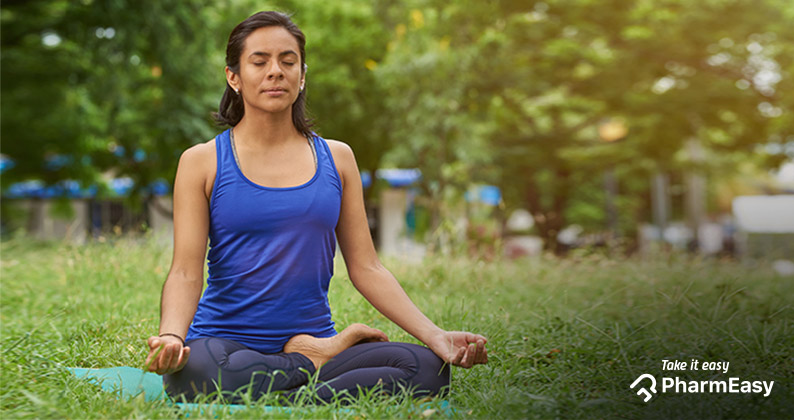8 Types Of Breathing Exercise Your Body Will Love!
By Dr Prachi Garg +2 more

Get,

to manage your symptom
Get your,


4 Cr+ families
benefitted

OTP sent to 9988776655



You’ve successfully subscribed to receive
doctor-approved tips on
Whatsapp

Get ready to feel your best.

Hi There,
Download the PharmEasy App now!!


Register to Avail the Offer
Send OTPBy continuing, you agree with our Privacy Policy and Terms and Conditions

Hi There,
Sign up on PharmEasy now!!
Trusted by 4 crore+ families

OTP sent to 9988776655



You have unlocked 25% off on medicines




Code: NU25
By Dr Prachi Garg +2 more
Are you contemplating practicing deep breathing exercises to reduce stress? If the answer is yes, then you are in the right direction. Breathing heals on many levels and understanding how it works is beneficial for both physical and mental well-being.
Different types of breathing exercises affect your body differently. Knowing which ones to practice when and why is crucial.

Table of Contents
Anulom Vilom is a famous and highly effective breathing exercise.
Bhramari is a very good breathing exercise to calm down our mind and get rid of hidden anger and frustration.
Sheetali Pranayama is a great breathing exercise to relieve stress and anxiety.
Since Kapalbhati involves working our abdominal muscles, it is effective in curing disorders of the stomach and getting rid of belly fat.
Bhastrika Pranayama energizes us and strengthens our abdominal muscles.
Available evidence on pranayama indicates physiological and psychological benefits. Beneficial effects were mostly observed in patients with respiratory diseases such as bronchial asthma. It also helped those with cancer and cardiovascular disease
Dr. M.G. Kartheeka, MBBS, MD(Pediatrics)
Sama Vritti is an effective breathing exercise that helps us to get good sleep by calming our mind.
Also Read: 7 Breathing Exercises That Help Asthma Patients
Diaphragmatic Breathing improves blood pressure and heart rate, thereby reducing stress and anxiety.
Pursed Lip Breathing helps to slow down our rate of breathing. It is useful for patients who experience breathlessness.
Regular, automatic breathing is a fundamental part of living. The act of intentional, focused deep breathing brings with it a lot of health benefits:
Breathing exercises are proven to be beneficial for heart health but you should always contact your cardiologist or your pulmonologist to see which type of exercise would work better for you as forced breathing out (expiration) may be damaging and may cause some inconvenience if performed without supervision.
Dr. Ashish Bajaj, M.B.B.S., M.D. in Clinical Pharmacology and Toxicology
Also Read: 7 Different Types of Relaxation Techniques That Help you Fight Stress
Disclaimer: The information provided here is for educational/awareness purposes only and is not intended to be a substitute for medical treatment by a healthcare professional and should not be relied upon to diagnose or treat any medical condition. The reader should consult a registered medical practitioner to determine the appropriateness of the information and before consuming any medication. PharmEasy does not provide any guarantee or warranty (express or implied) regarding the accuracy, adequacy, completeness, legality, reliability or usefulness of the information; and disclaims any liability arising thereof.
Links and product recommendations in the information provided here are advertisements of third-party products available on the website. PharmEasy does not make any representation on the accuracy or suitability of such products/services. Advertisements do not influence the editorial decisions or content. The information in this blog is subject to change without notice. The authors and administrators reserve the right to modify, add, or remove content without notification. It is your responsibility to review this disclaimer regularly for any change

Leave your comment...
Comments